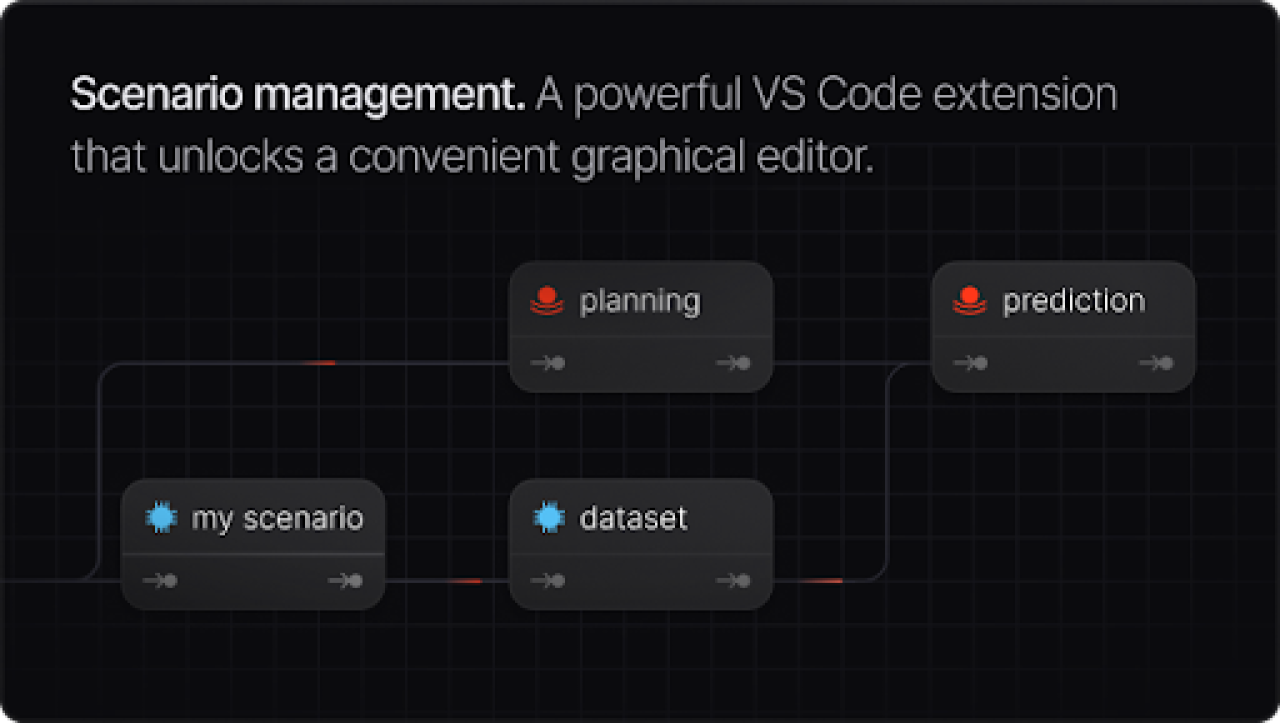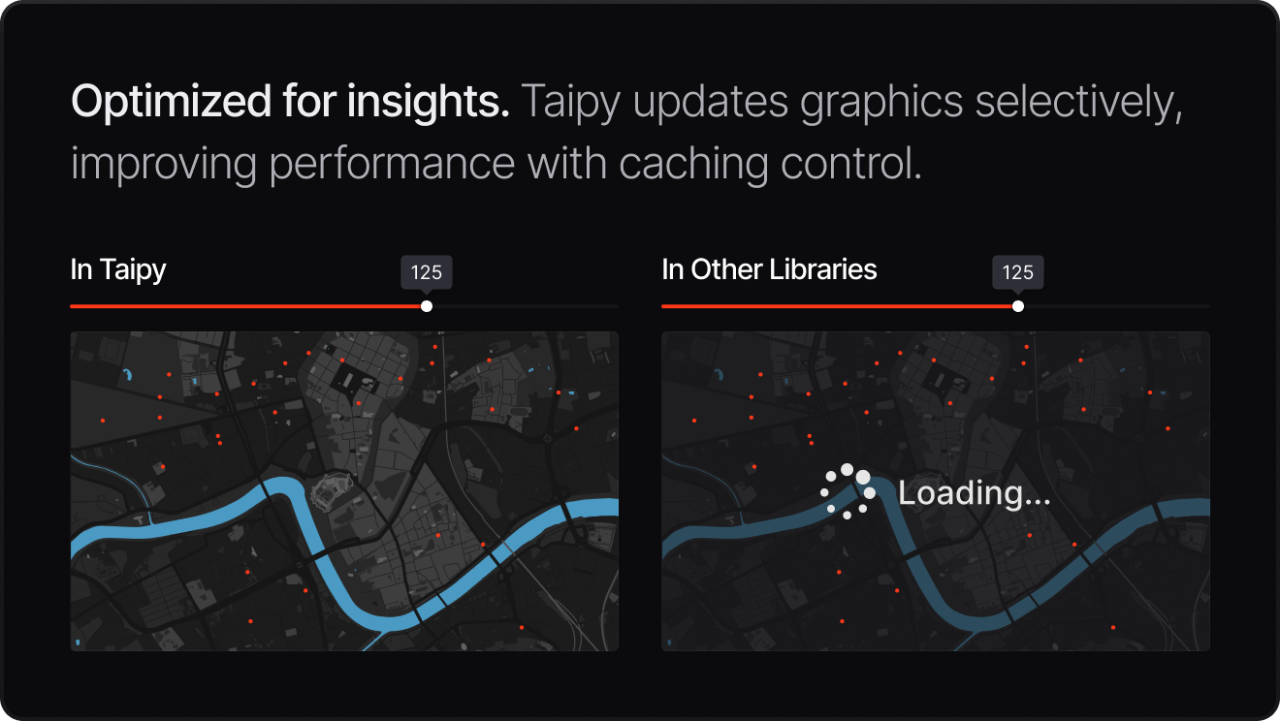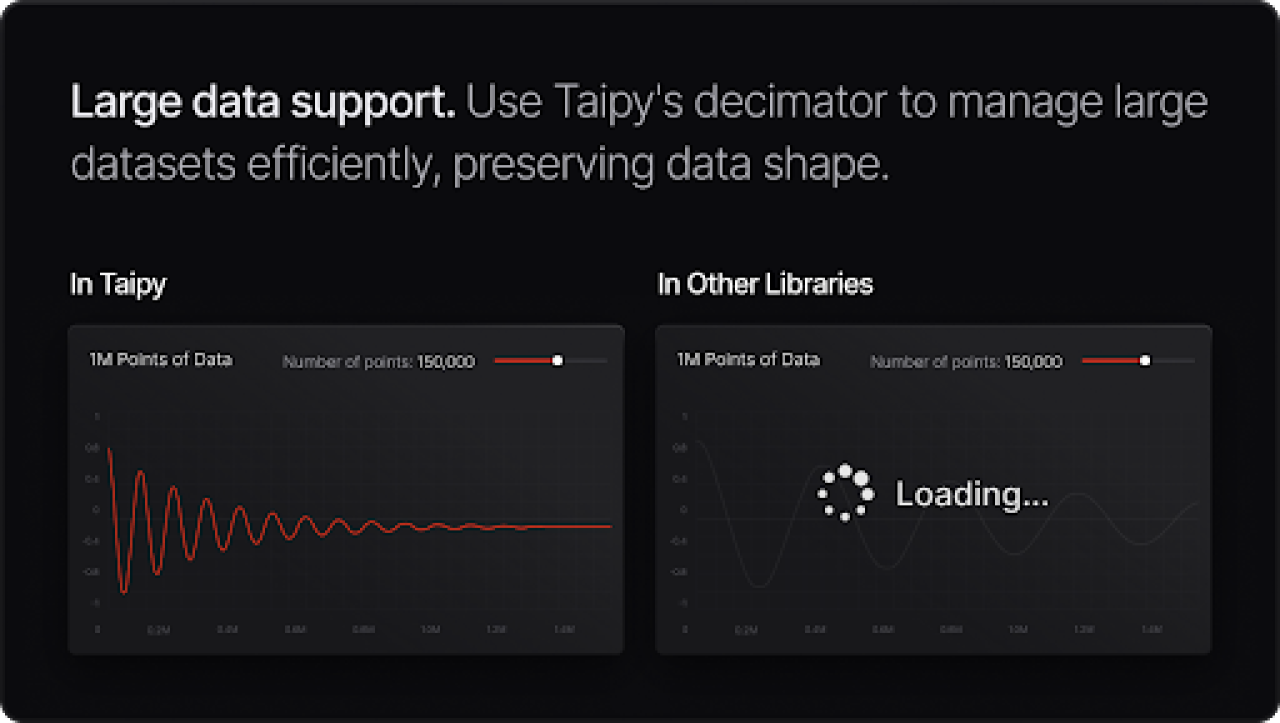Build Python Data & AI web applications
No more compromise on performance, customization, and scalability.
Go beyond existing libraries
What's Taipy?
Taipy is designed for data scientists and machine learning engineers to build data & AI web applications.
Enables building production-ready web applications.
No need to learn new languages. Only Python is needed.
Concentrate on Data and AI algorithms without development and deployment complexities.
Taipy is a Two-in-One Tool for UI Generation and Scenario/Data Management
| User Interface Generation | Scenario and Data Management |
|---|---|
✨ Key Features



⚙️ Quickstart
To install Taipy stable release run:
pip install taipy
To install Taipy on a Conda Environment or from source, please refer to the Installation Guide.
To get started with Taipy, please refer to the Getting Started Guide.
Scenario and Data Management
Let's create a scenario in Taipy that allows you to filter movie data based on your chosen genre.
This scenario is designed as a straightforward pipeline.
Every time you change your genre selection, the scenario runs to process your request.
It then displays the top seven most popular movies in that genre.
⚠️ Keep in mind, in this example, we're using a very basic pipeline that consists of just one task. However,
Taipy is capable of handling much more complex pipelines ????
Below is our filter function. This is a typical Python function and it's the only task used in this scenario.
def filter_genre(initial_dataset: pd.DataFrame, selected_genre):
filtered_dataset = initial_dataset[initial_dataset['genres'].str.contains(selected_genre)]
filtered_data = filtered_dataset.nlargest(7, 'Popularity %')
return filtered_data
This is the execution graph of the scenario we are implementing

Taipy Studio
You can use the Taipy Studio extension in Visual Studio Code to configure your scenario with no code
Your configuration is automatically saved as a TOML file.
Check out Taipy Studio Documentation
For more advanced use cases or if you prefer coding your configurations instead of using Taipy Studio,
Check out the movie genre demo scenario creation with this Demo.

User Interface Generation and Scenario & Data Management
This simple Taipy application demonstrates how to create a basic film recommendation system using Taipy.
The application filters a dataset of films based on the user's selected genre and displays the top seven films in that genre by popularity.
Here is the full code for both the frontend and backend of the application.
import taipy as tp
import pandas as pd
from taipy import Config, Scope, Gui
# Defining the helper functions
# Callback definition - submits scenario with genre selection
def on_genre_selected(state):
scenario.selected_genre_node.write(state.selected_genre)
tp.submit(scenario)
state.df = scenario.filtered_data.read()
## Set initial value to Action
def on_init(state):
on_genre_selected(state)
# Filtering function - task
def filter_genre(initial_dataset: pd.DataFrame, selected_genre):
filtered_dataset = initial_dataset[initial_dataset["genres"].str.contains(selected_genre)]
filtered_data = filtered_dataset.nlargest(7, "Popularity %")
return filtered_data
# The main script
if __name__ == "__main__":
# Taipy Scenario & Data Management
# Load the configuration made with Taipy Studio
Config.load("config.toml")
scenario_cfg = Config.scenarios["scenario"]
# Start Taipy Orchestrator
tp.Orchestrator().run()
# Create a scenario
scenario = tp.create_scenario(scenario_cfg)
# Taipy User Interface
# Let's add a GUI to our Scenario Management for a full application
# Get list of genres
genres = [
"Action", "Adventure", "Animation", "Children", "Comedy", "Fantasy", "IMAX"
"Romance","Sci-FI", "Western", "Crime", "Mystery", "Drama", "Horror", "Thriller", "Film-Noir","War", "Musical", "Documentary"
]
# Initialization of variables
df = pd.DataFrame(columns=["Title", "Popularity %"])
selected_genre = "Action"
# User interface definition
my_page = """
# Film recommendation
## Choose your favorite genre
<|{selected_genre}|selector|lov={genres}|on_change=on_genre_selected|dropdown|>
## Here are the top seven picks by popularity
<|{df}|chart|x=Title|y=Popularity %|type=bar|title=Film Popularity|>
"""
Gui(page=my_page).run()
And the final result:

Contributing
Want to help build Taipy? Check out our Contributing Guide.
Code of conduct
Want to be part of the Taipy community? Check out our Code of Conduct
License
Copyright 2021-2024 Avaiga Private Limited
Licensed under the Apache License, Version 2.0 (the "License"); you may not use this file except in compliance with
the License. You may obtain a copy of the License at
(Apache License)http://www.apache.org/licenses/LICENSE-2.0
Unless required by applicable law or agreed to in writing, software distributed under the License is distributed on
an "AS IS" BASIS, WITHOUT WARRANTIES OR CONDITIONS OF ANY KIND, either express or implied. See the License for the
specific language governing permissions and limitations under the License.
No reviews found!






















No comments found for this product. Be the first to comment!